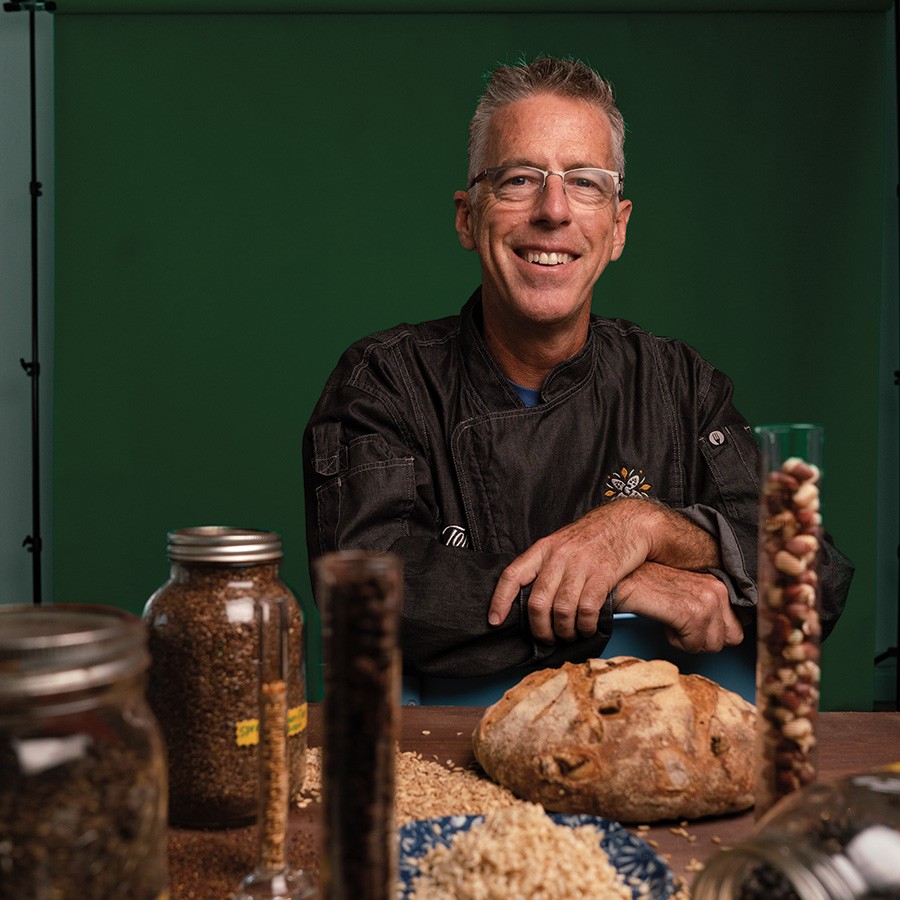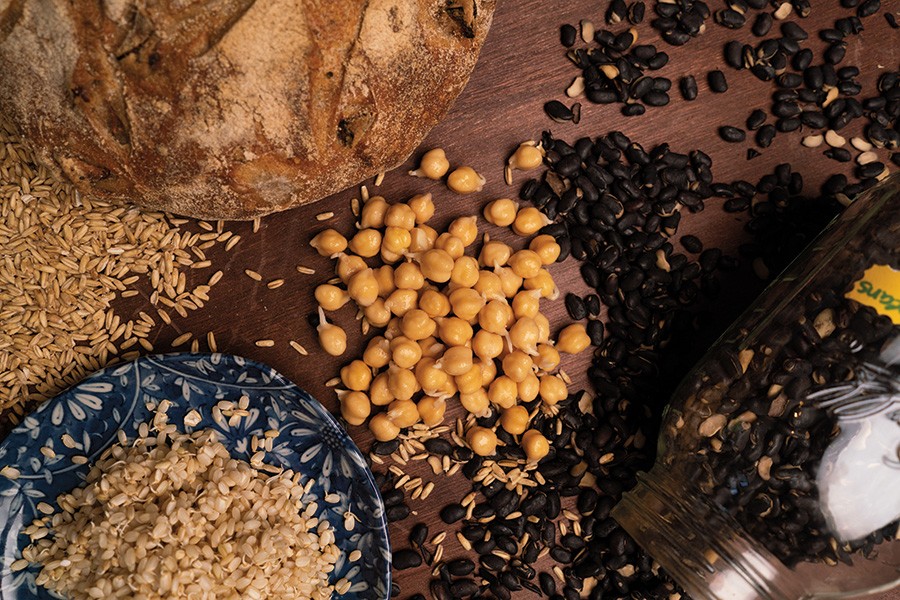Tom Gumpel likes to say he is just a baker. He trained at the Culinary Institute of America in baking and pastry arts, where he went on to serve as dean. He worked as VP of product development for Panera, managing the entire bakery output of the national chain. He can bake a mean loaf of sourdough or a textbook muffin. To refer to himself as “just a baker,” though oversimplified, is not entirely wrong. But it hardly seems to explain how, earlier this year, he stood in front of a room full of nutrition scientists and told them something they did not know. “Just a baker” cannot explain how the literal creator of the food pyramid and dean of Harvard’s School of Public Health found his jaw dropped after Gumpel’s presentation on the potential of sprouted grains to revolutionize public health and everyday nutrition.
How Gumpel came to wow a room full of scientists begins, unsurprisingly, with bread. “Bread fed entire civilizations, right?” says Gumpel, “but then suddenly you wake up one day and someone in yoga pants is telling you it’s bad for you.” Bread, asserts Gumpel, is not inherently evil (neither are yoga pants). The evil comes from the transition in the early 20th century toward mass-produced wheat products. When bread production becomes industrialized, the nutritional value of wheat begins to drop dramatically. The grains that comprise wheat flour used to undergo a more natural life cycle. After harvesting, they would sit in silos or train cars for days and weeks on end, continuing to germinate. Gumpel used to instruct his legion of Panera bakers to leave their grain shipments in shipping containers to age. While this sounds at first glance like a recipe for foodborne illness, the truth is the opposite.

Grains, seeds, nuts, beans and legumes are all coated in a pesky little compound called phytic acid. The coating is designed to survive the digestive tracts of the animals that eat it, who then expel it out the other end intact, and primed to sprout into the plants from which they came. Phytic acid is an antinutrient. It acts as an armor shell that prevents its nutritious insides from being broken down by the human (or bird) body. Aging grains that are coated in phytic acid yields two natural processes that break down the armored shell—fermentation and/or sprouting. When Gumpel instructed his bakers to let their grain shipments sit around, he was promoting these two processes in order to increase the bioavailability of nutrients in the wheat. The same thing used to happen to wheat when it sat in silos and train cars. When expediency becomes the priority, however, the grain is processed before this natural process can occur, yielding high-glycemic bread that is rightfully demonized by carb-conscious eaters and partially responsible for the rise of obesity and diabetes in the US.
What Gumpel showed in his presentation to the expert nutrionists is that a scientific approach to sprouting and/or fermenting common grains, seeds, nuts, beans and legumes can transform these staples into the superfoods they nearly used to be. “Imagine a food that has the protein of meat, the omega-3 fats of fish, the vitamin content of vegetables and the antioxidants of the trendiest berry,” says Gumpel. “It sounds crazy, but that’s what you get when you sprout or ferment these things under the right conditions.” If it sounds too good to be true, consider these additional benefits: the earthiness that makes some people dislike whole wheat bread disappears, mineral counts increase as much as tenfold, and pre- and probiotics appear that further aid in nutrient absorption.

But bread is just the beginning. Gumpel has his eye on transforming another global staple into a superfood. Coffee, like bread, seems to have gotten a bad rap in the last several decades. Despite its documented health benefits, people continue to drink it in moderation the way they would a glass of wine. “The problem with coffee is all the stuff we put in it to candy it up,” says Gumpel. Coffee also presents an obstacle in that it tastes bitter and contains fairly high levels of cavity-inducing acids. The discolored teeth that come from drinking black coffee serve as a kind of a working-class badge of honor. Sprouting the coffee bean before roasting, grinding and brewing it, however, eliminates the issues presented by its taste and acid. “It’s smoother and a little sweeter,” says Gumpel, who is currently working with a team of food researchers in Canada to develop the coffee sprouting process.
Like sprouted wheat, sprouted coffee beans also contain higher nutrient and antioxidant numbers. This is very powerful information that has the chance to revolutionize the health of an entire population. “I didn’t invent the information,” says Gumpel. “I just framed it in a new way and somehow got a chance to start a new conversation with a bunch of people in lab coats.” Not too shabby for a guy who is just a baker. SRQ









